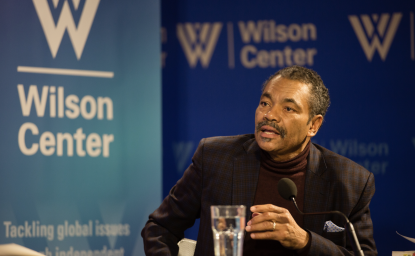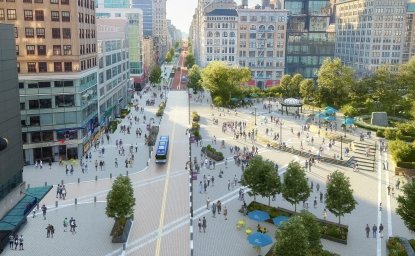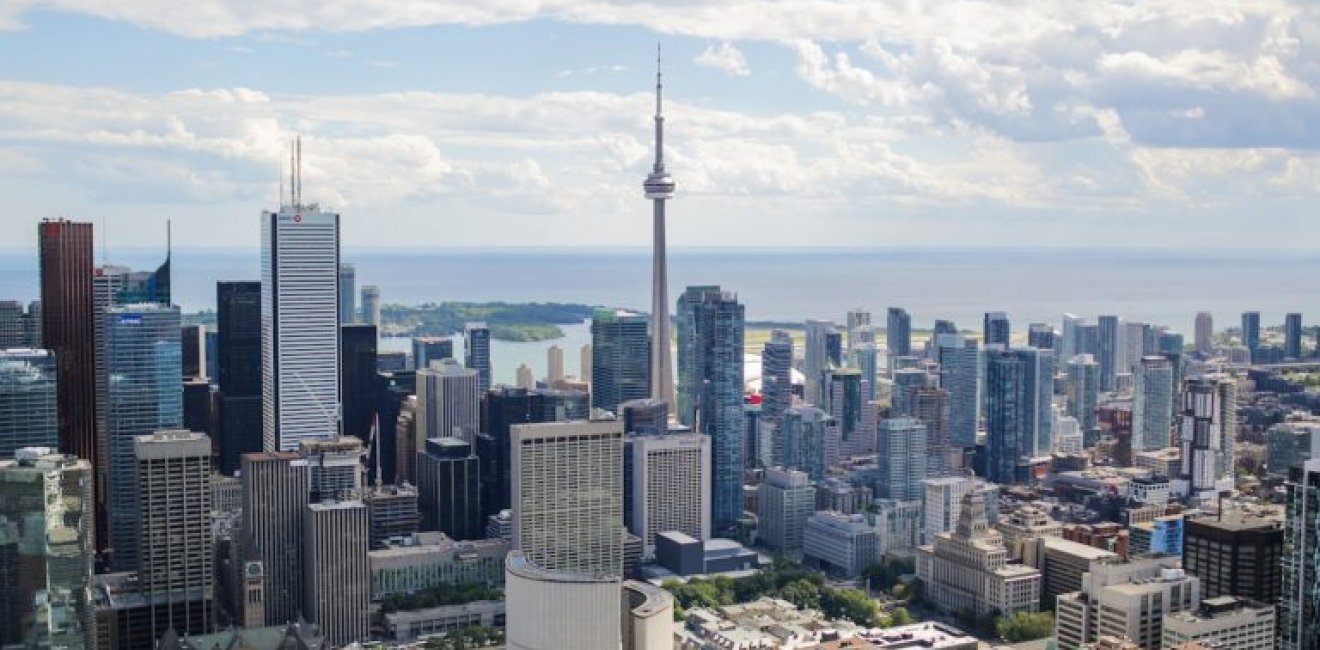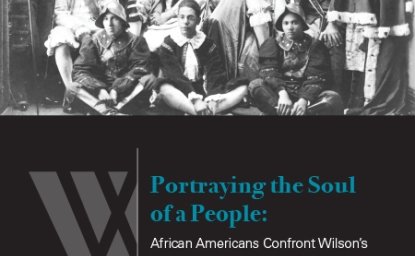Toronto is widely praised as one of the world’s most successful examples of urban multiculturalism. With just under half of the city’s population having been born abroad, Toronto ranks second only to Miami among immigrant gateway cities. Immigrants continue to arrive seeking the city’s promise of opportunity with dignity.
The diverse Toronto of today would have seemed unthinkable just a lifetime ago. At the end of World War II, Toronto retained its reputation as “America’s Belfast.” A deeply provincial industrial colonial outpost, Toronto throughout the first half of the twentieth century seemingly lacked the dynamism of its as-yet-flourishing rust belt partners across the border to the south (such as Rochester, Buffalo, Cleveland, Toledo and Detroit). As industry grew, thousands of working class families – often Irish Catholics — were relegated to substandard, often self-built homes in such neighborhoods as “Cabbagetown.” Toronto similarly played a distant second fiddle within Canada to the country’s older historic financial and mercantile center, Montreal.
A robust, largely East European Jewish immigrant community proved to be the first harbinger of change when it arrived during the early years of the twentieth century. Toronto’s first Jewish residents were dirt poor having traveled more or less directly from the harsh shtetls of the Russian Empire. They were greeted unkindly by both Protestant and Catholic Torontonians, a hostility exemplified by the infamous August 1933 Christie Pits Riots that erupted when National Socialist wannabe Swastika Clubs attacked “foreigners” at a baseball game between Jewish and Italian community teams.
World War II transformed the city forever. The war solidified the presence of Toronto’s financial institutions while expanding the city’s industrial base. By the end of the war Toronto had become one of the chief shop floors for the British war effort. The war similarly nurtured a nascent communications sector that would grow to rival similar centers across North America.
Immigrants were beginning to make their presence felt in new ways as well. More successful members of the Jewish community began to move to the small, independent, wealthy enclave of Forest Hills. The floodgates of Italian immigration were about to open, luring tens of thousands of those impoverished by war. Moreover, English Canada began to integrate into a booming continental postwar American economy untouched by the ravages of war. Protestant working class hardliners continued to exert influence over public institutions; while “Old Compact” elite families controlled the commanding heights of Ontario life from neighborhoods with names such as “Rosedale.”
How is it, then, that a child born in postwar Toronto now wakes up on any morning a lifetime later as a resident of one of the most successfully diverse cities in the world?
How did this closed bigoted town grow into a celebrated poster child for late twentieth century urban multiculturalism?
What are the keys of success in transforming a spiteful provincial backwater into a global powerhouse embracing residents from every conceivable corner of the world?
What are the limits of that success imposed by some of the public and private policies that have promoted multiculturalism?
Observers from afar often assume that the Canadian multiculturalism model of citizenship adopted by the Canadian Parliament in 1971 must hold the answer to these questions. Such federal policies, which were further enshrined in law with the passage of the 1988 Multiculturalism Act, undoubtedly have played a supporting role over time. However, the story has far deeper roots.
Changing federal immigration policies have had considerable impact in this transformation. Postwar reductions in immigration restrictions opened the door for poor Italians to fill the seemingly endless construction and industrial jobs created by an exploding Canadian economy. The Italian immigrant offspring generation took full advantage of the city’s expanding universities to move into the middle class. By the early twenty-first century, Toronto had become home to nearly 500,000 Italians, 90 percent of whom trace their residence in the city to immigration immediately following World War II.
The Italians were followed by other groups fleeing deprivation in Europe. A significant Hungarian community formed following the failed 1956 Hungarian uprising against Soviet domination. Greeks fleeing their own internecine conflicts at home similarly established a robust presence; as did Portuguese immigrants somewhat later.
The federal government lifted racial quotas on immigrant selection in 1967, converting the granting of immigrant status to a point system based on skills and educational achievement. This change led to a dramatic shift over time in immigrant country of origin.
Prior to this change, 90 percent of Canadian immigrants came from Europe, with only three percent arriving from Asia. By the mid-2000s, nearly 85 percent of Canadian immigrants were non-European. As the largest port of entry into the country, Toronto immediately felt these dramatic demographic shifts on its streets and in its neighborhoods.
Immigrants continue to fuel the city’s metropolitan growth, with over 100,000 arriving in the region every year. Toronto has grown faster than any North American city over the past half-century other than Los Angeles. The Greater Toronto Area presently has a population over six million; and, the larger Southern Ontario Golden Horseshoe within which it sits exceeds nine million residents.
According to the 2011 Canadian census, there are nearly as many Torontonians of Chinese ethnic origin (12 percent) as there are of English heritage (12.9 percent); and more than those who identify themselves as “Canadian” (11.3 percent). Religious diversity has become just as striking, with Catholics constituting the largest group (28.2 percent), followed by those with no religious affiliation (24.2 percent) and Protestants as a distant third (11.9 percent).
If Canadian federal policies fostered the context for metropolitan transformation, Ontario provincial and Toronto municipal policies have proven critical for insuring that diversity would become an asset rather than a liability. More often than not regional and local officials were driven by the exigencies of an increasingly modern economy that required a workforce that was mobile, educated and literate. Watching the immigration story unfold, local elites at the provincial level moved to standardize education, labor practices, and cultural policies.
A small circle of Protestant, British-oriented elite families dominated Ontario life from the earliest days of colonization. Discretely hidden within their board rooms, social clubs, and Anglican Churches, members of Ontario’s elite thought of themselves as the most proper custodians of Upper Canada’s British colonial legacy. For more than a quarter century, their “Big Blue” Machine controlled Ontario politics with a string of Progressive Conservative governments stretching from 1943 until 1985.
Collectively, this Protestant elite believed that government should be run by the business virtues of efficiency, incorruptibility, sober and steady administration intended to provide a predictable business order which would benefit all. They endorsed agendas favoring planning, private enterprise, home ownership, infrastructure development, education and research all in the name of advancing Ontario’s business climate. This was the era when British actor Peter Ustinov famously quipped that Toronto was “New York run by the Swiss.”
Premiers John Robarts and Bill Davis, who remained in office throughout the 1960s and 1970s into the 1980s, extended previously unknown opportunity for affordable high quality higher education for Ontarians, including second generation immigrants. Their “Red Tory” policies similarly expanded access to health care and other public services, eroding any sense of zero-sum competition among foreign and native born families.
A prolonged recession during the 1990s tested this model of inter-ethnic relations. By that time, however, the embrace of multiculturalism and diversity had become embedded in the local identity.
Municipalities under the Canadian system are subdivisions of their provincial governments rather than self-standing institutions. Consequently, the role of local officials becomes dependent on whatever arrangement is established by provincial legislation. In the case of Toronto, the business-oriented approach of the Progressive Conservatives led to the establishment of the first metropolitan government in North America.
Created in 1953, the Municipality of Metropolitan Toronto served as an upper tier of municipal government incorporating six boroughs of which the City of Toronto was the largest. This system continued until 1998 when the Province amalgamated all six constituent boroughs into a new City of Toronto.
“Metro,” as the regional government was known, supported concentration in the traditional Toronto downtown, as well as the development of a vast suburban region punctuated by nodes of commercial activity. This unusual balance between simultaneous concentration and suburbanization offered newly arriving immigrants a wide inventory of housing and employment opportunities.
Toronto City officials provided powerful symbolic support for the changes that were taking place throughout the city and region. Beginning in 1969, the city supported a week-long celebration of ethnic diversity known as “Caravan.”
Torontonians at the time purchased “passports” which they took to have stamped at pavilions featuring ethnic foods and performances in each community. By the 1970s, as many as 400,000 people trekked from one corner of Toronto to another during Caravan, marveling at a multiculturalism they had never before imagined. The festival had lost its luster by the early 2000s, and came to an end. Torontonians no longer required a special invitation to experience multiculturalism.
Enthusiastic praise for Toronto’s successful transformation from “America’s Belfast” to one of the world’s most successful multicultural cities is rightly celebrated. However, praise should not obscure some of the very real limits to multicultural comity that have emerged with the passage of time. Two structural challenges – those of race and inequality – deserve attention.
Initially, Blacks arrived from the British Isles, or escaped from slavery and Jim Crow discrimination in the United States. Today’s Black residents are primarily immigrants from the Caribbean and their offspring.
The 2017 “Black Experience Project in the GTA” [Greater Toronto Area] reported that Torontonians of African descent include some 400,000 individuals who self-identify as “Black.” This community is comprised of individuals from several countries, speaking multiple languages and practicing varied religions. Many are highly successful and the community as a whole has made substantial contributions to the city’s, region’s, and country’s success.
Black people across all of these differences share a belief that racism is common in Toronto. Black Torontonians are more likely than other Torontonians to be questioned by the police (79 percent of Black men aged 25 to 44 reported having been stopped by officers); more likely to be shot by the police; more likely to live in segregated communities; more likely to be streamed into non-academic curricula; and more likely to face daily “micro-aggressions.” Economic data reveal that 25 percent of Toronto’s Blacks fall into low income categories, as opposed to 11 percent of “non-visible minorities.”
A fulsome celebration of multiculturalism similarly obscures solidifying patterns of inequality throughout the Toronto region. Landmark studies published in 2010 by University of Toronto sociologist David Hulchanski – The Three Cities within Toronto – and in 2002 and 2011 by the United Way – Poverty by Postal Code – exposed significant, persistent, and growing income inequality throughout the Toronto metropolitan region.
Over the course of the past three-quarters of a century, Toronto has made a remarkable transition from being a grungy industrial “American Belfast” to one of the continent’s most successful and diverse “Global Cities.” This accomplishment holds many lessons for other communities.
The first is to understand that change on the scale of a city is incremental, with new norms and expectations building up as coral expands a reef. There are no comprehensive policy responses that address all the challenges of growing diversity; nor are there any single levels of power that make a difference on their own. In the Toronto case, partnerships among federal, provincial, and city officials together with community organizations and an all-important private sector paved the way for the city’s greatest advances.
Similarly, the Toronto experience demonstrates the prominence of long-term and sustained investment in providing quality education for all residents from primary school through graduate and professional education.
Finally, there must be a recognition that the task of sustaining a vibrant and productive multicultural community is never complete. Noisome challenges of race and inequality remain despite all of Toronto’s impressive achievements.
Whatever these challenges may be, contemporary Toronto demonstrates the wisdom of its own official motto: “Diversity Our Strength.”
This article was originally published in Meeting of the Minds. To read the original article click here.
Author

Former Wilson Center Vice President for Programs (2014-2017); Director of the Comparative Urban Studies Program/Urban Sustainability Laboratory (1992-2017); Director of the Kennan Institute for Advanced Russian Studies (1989-2012) and Director of the Program on Global Sustainability and Resilience (2012-2014)

Urban Sustainability Laboratory
Since 1991, the Urban Sustainability Laboratory has advanced solutions to urban challenges—such as poverty, exclusion, insecurity, and environmental degradation—by promoting evidence-based research to support sustainable, equitable and peaceful cities. Read more

Explore More
Browse Insights & Analysis
Dr. Maurice Jackson: The Sounds of Resistance Throughout History

Smart Cities and Climate Change: The Evolution and Curation of Knowledge


